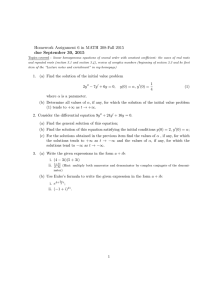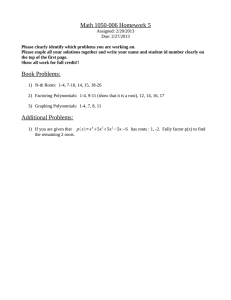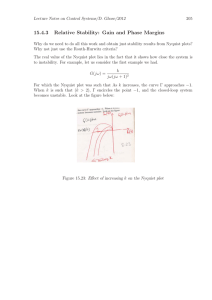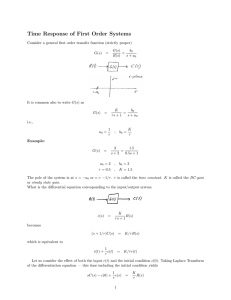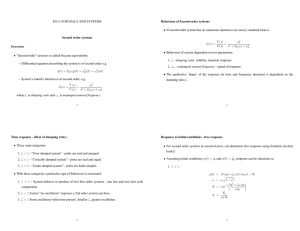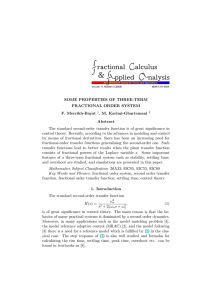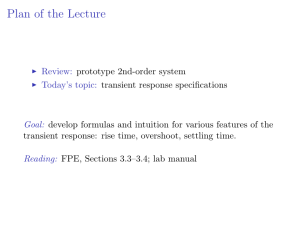Unified Engineering II Spring 2004
advertisement
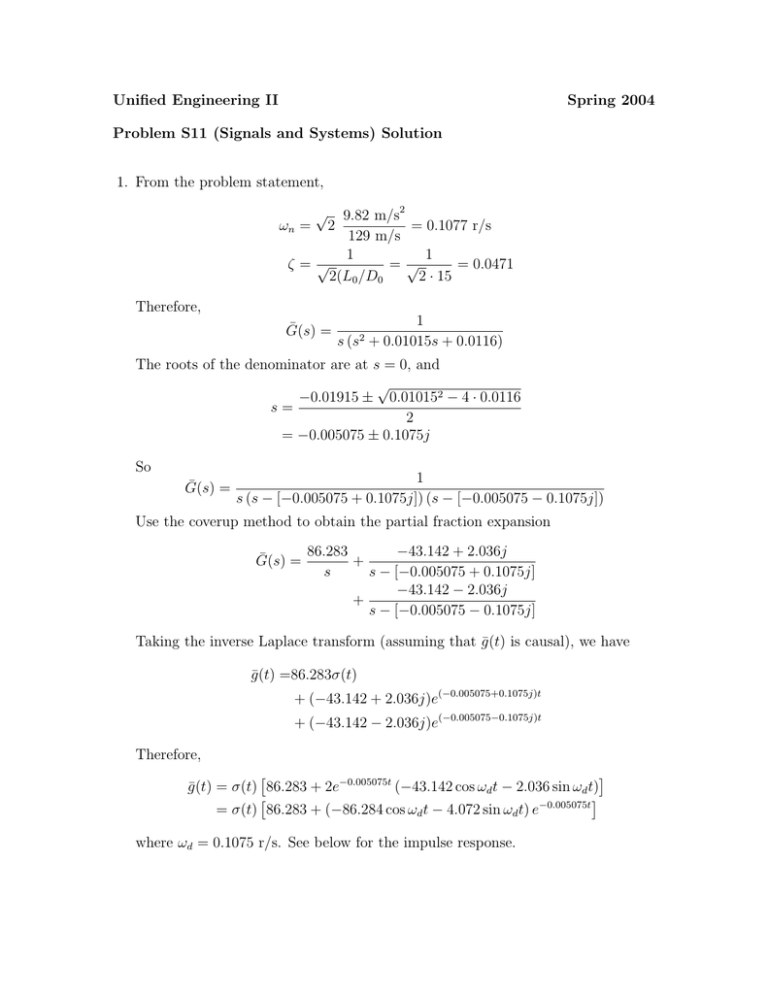
Unified Engineering II Spring 2004 Problem S11 (Signals and Systems) Solution 1. From the problem statement, √ 9.82 m/s2 = 0.1077 r/s 129 m/s 1 1 ζ=√ =√ = 0.0471 2(L0 /D0 2 · 15 ωn = 2 Therefore, Ḡ(s) = 1 s (s2 + 0.01015s + 0.0116) The roots of the denominator are at s = 0, and √ −0.01915 ± 0.010152 − 4 · 0.0116 s= 2 = −0.005075 ± 0.1075j So Ḡ(s) = 1 s (s − [−0.005075 + 0.1075j]) (s − [−0.005075 − 0.1075j]) Use the coverup method to obtain the partial fraction expansion 86.283 −43.142 + 2.036j ¯ G(s) = + s s − [−0.005075 + 0.1075j] −43.142 − 2.036j + s − [−0.005075 − 0.1075j] Taking the inverse Laplace transform (assuming that ḡ(t) is causal), we have ḡ(t) =86.283σ(t) + (−43.142 + 2.036j)e(−0.005075+0.1075j)t + (−43.142 − 2.036j)e(−0.005075−0.1075j)t Therefore, � � ḡ(t) = σ(t) 86.283 + 2e−0.005075t (−43.142 cos ωd t − 2.036 sin ωd t) � � = σ(t) 86.283 + (−86.284 cos ωd t − 4.072 sin ωd t) e−0.005075t where ωd = 0.1075 r/s. See below for the impulse response. 180 160 140 Impulse response, g(t) 120 100 80 60 40 20 0 0 100 200 300 Time, t (sec) 400 500 600 2. From the problem statement, H(s) k Ḡ(s) = R(s) 1 + k Ḡ(s) 1 + 2ζωn s + ωn2 ) = 1 1+k 2 s(s + 2ζωn s + ωn2 ) k = 3 s + 2ζωn s2 + ωn2 s + k k s(s2 So the poles of the system are the roots of the denominator polynomial, φ(s) = s3 + 2ζωn s2 + ωn2 s + k = 0 The roots can be found using Matlab, a programmable calculator, etc. The plot of the roots (the “root locus”) is shown below. Note that the oscillatory poles go unstable at a gain of only k = 0.000118. 0.5 0.4 0.3 Imaginary part of s 0.2 0.1 0 -0.1 -0.2 -0.3 -0.4 -0.5 -0.5 -0.4 -0.3 -0.2 -0.1 Real part of s 0 0.1 0.2 0.3 3. The roots locus for negative gains can be plotted in a similar way, as below. Note that the real pole is unstable for all negative k. 0.5 0.4 0.3 Imaginary part of s 0.2 0.1 0 -0.1 -0.2 -0.3 -0.4 -0.5 -0.3 -0.2 -0.1 0 0.1 0.2 Real part of s 0.3 0.4 0.5


